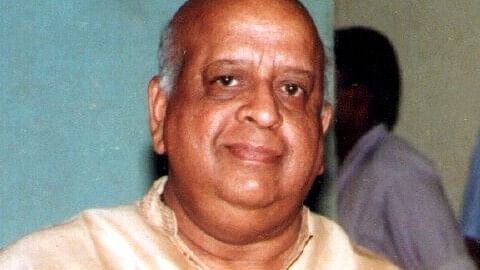Former chief election commissioner T.N. Seshan, who turns 86 today, is credited with cleaning up the Indian electoral system between 1990 & 1996.
New Delhi: It might be passé today to drag the Election Commission into murky slugfests between political parties, but it was unimaginable when T.N. Seshan was in charge.
On 15 December, Seshan will turn 86 years old at an old-age home in Chennai — an ailing, pale shadow of the man credited with cleaning up Indian elections as chief election commissioner between 1990 and 1996.
Indian politicians, it was said, feared only God or T.N. Seshan. Even today, Seshan’s tenure is remembered fondly — the Supreme Court recently told the poll body to aspire for the kind of credibility it enjoyed during Seshan’s days.
“He really gave the Election Commission the face and stature it enjoys today,” said V.S. Sampath, one of his successors as CEC.
So, what really makes Seshan’s legacy unparalleled?
Seshan’s legacy at the EC
Seshan seemed to own a big stick, and spared nobody while swinging it. He is credited with effectively implementing the Model Code of Conduct for the first time, reining in muscle and money power in elections, filing cases and arresting candidates for not abiding by polling rules, and suspending officials for aligning with candidates.
Another former CEC, H.S. Brahma, said: “The EC can continue to learn from his legacy. From the 1960s right up to the 80s, the EC was being run Ram-bharose (left in the hands of Lord Ram).
“He was the first CEC to actually implement the Model Code of Conduct and the rule of law. Before him, election commissioners were happy to just announce election results.
“He was ruthless and unforgiving when it came to the electoral staff across the country about electoral discipline…And not just that, he was equally strict with politicians — he wouldn’t listen to them.”
In a move that raised many eyebrows in political circles, in 1994, he advised then Prime Minister P.V. Narasimha Rao to remove two sitting cabinet ministers — welfare minister Sitaram Kesari and food minister Kalpnath Rai — from the cabinet for reportedly influencing voters.
Despite being criticised for ostensibly overstepping his mandate, an unfazed Seshan stuck to his guns.
Having cut candidates’ expenditure during elections significantly, he ensured that the image of wealthy politicians landing in poverty-stricken villages in government-loaned helicopters, distributing alcohol and money, became a thing of past.
There was zero tolerance for campaign speeches stroking religion and caste-based hatred.
Also read: The United States should hire India’s Election Commission to conduct their polls
Civil servant & Presidential candidate
On either side of his term as CEC, Seshan remained in public service. A 1955-batch IAS officer from the Tamil Nadu cadre, Seshan served in various capacities in his home state and at the Centre, rising to the rank of cabinet secretary — the senior-most position in the civil service hierarchy. He served in this capacity for just over eight months in 1989, becoming the shortest-serving cabinet secretary in the history of independent India.
He also served as a member of the now-dissolved Planning Commission, and contested the 1997 election for President of India opposite the eventual winner, K.R. Narayanan.
Along the way, his style of functioning earned him many detractors, who thought of him as a dictatorial megalomaniac. Stray allegations of him once ordering his bodyguards to open fire on a car that was blocking his way did not help.
Yet, little could, or still can, dampen his incorruptible legacy.
